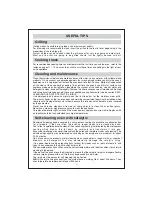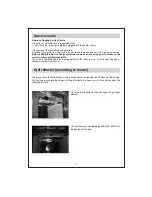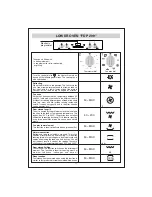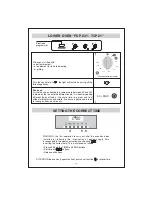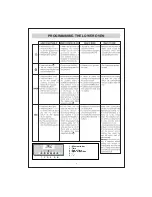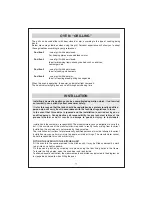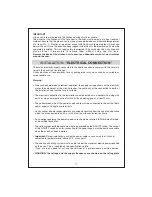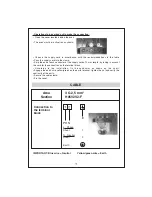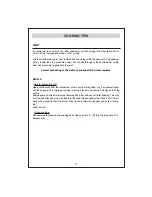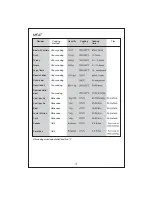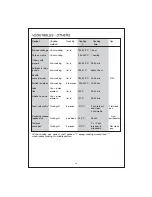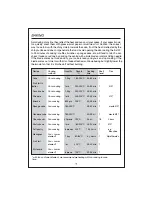
Avoid using shiny tins, they reflect the heat and can spoil your cakes. If your cakes brown
too quickly, cover them with grease-proof paper or aluminium foil. Caution: the correct
way to use foil is with the shiny side in towards the cake. If not the heat is reflected by the
shiny surface and does not penetrate the food. Avoid opening the door during the first 20
to 25 minutes of cooking: soufflés, brioches, sponge cakes, etc. will tend to fall. You can
check if cakes are done by pricking the centre with a knife blade or metal knitting needle.
If the blade comes out nice and dry, your cake is ready and you can stop cooking. If the
blade comes out moist or with bits of cake attached, continue baking but slightly lower the
thermostat so that it is finished off without burning.
Recipe
Cooking
Quantity
Cookin Cooking
Shelf
Tips
method
°
C time
level
Cake
Conv cooking
1,5 kg
180-200
°
C 50-60 min
1
Fruit tart in
batter
Conv cooking
for 6 200-220
°
C 40-50 min
1
Ø 27
Pound cake
Conv cooking 1,5 kg
200-220
°
C 45-50 min
1
Filled pie
Conv cooking
for 6
200-220
°
C 40-45 min 1
Ø 27
Brioche
Fan cooking
800 grs
200
°
C 40-45 min
1
Sponge cake
Fan cooking
180-200
°
C 35-40 min
1
mould Ø27
Genoese cake
Fan cooking
180-200
°
C 30-35 mi 1
mould Ø27
Choux pastry
Fan cooking
40 piece 190
°
C 35 mi 1/3
2 trays
Pastry base
Fan cooking
for 6
180-200
°
C 20-30 min 1 Ø 27
Puff pastry
Fan cooking 6 pieces
200
°
C
15-20 min 1
e.g.
Bouchée
Meringues
Fan + Lower
element*
1 tray 80-85
°
C 4 hours 1 Øprofiteroles
Fruit tart
Fan + Lower
element*
for 220
°
C 35-40 min
1
St Honoré
Fan + Lower
element*
6 piece 190
°
C 30-35 min
1
* with fan and lower element, we recommend preheating with fan cooking to save
time.


